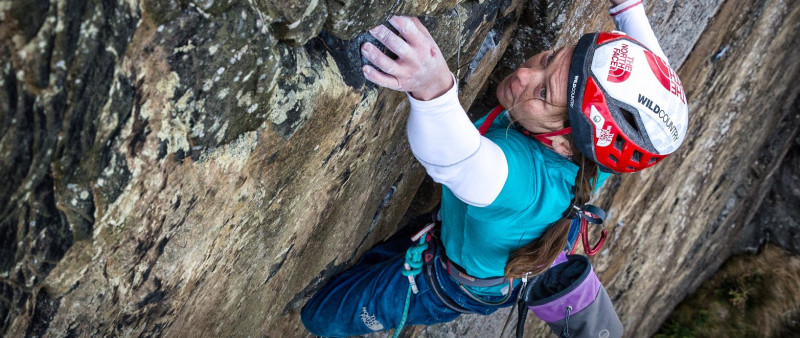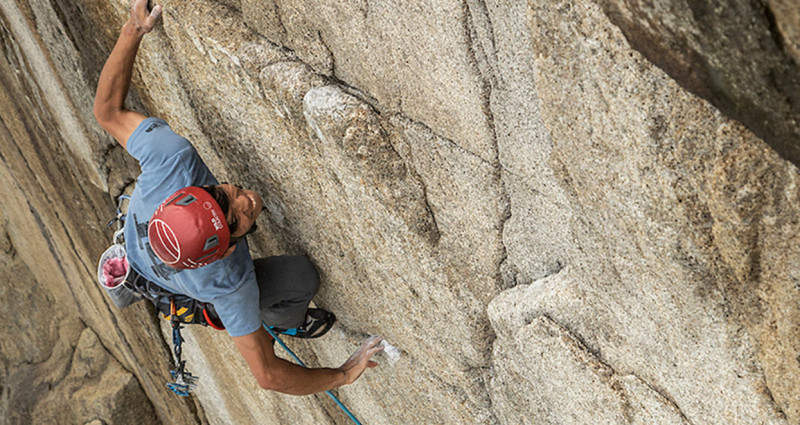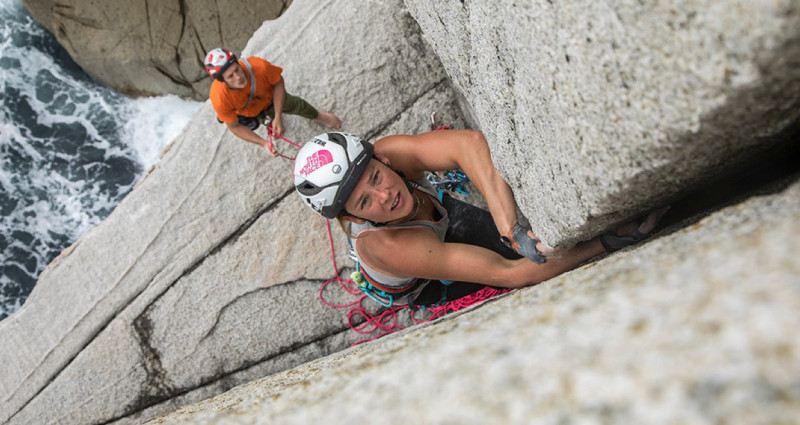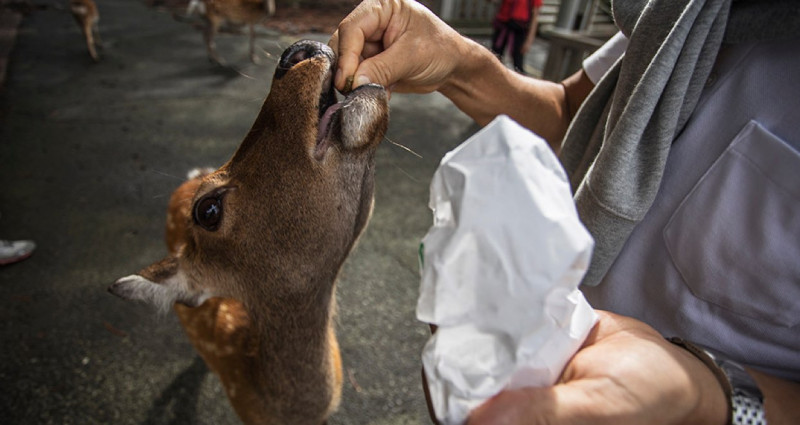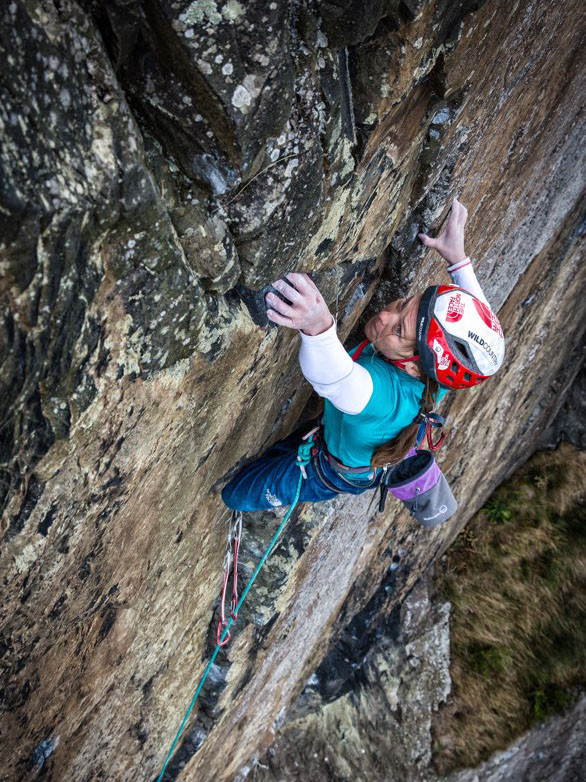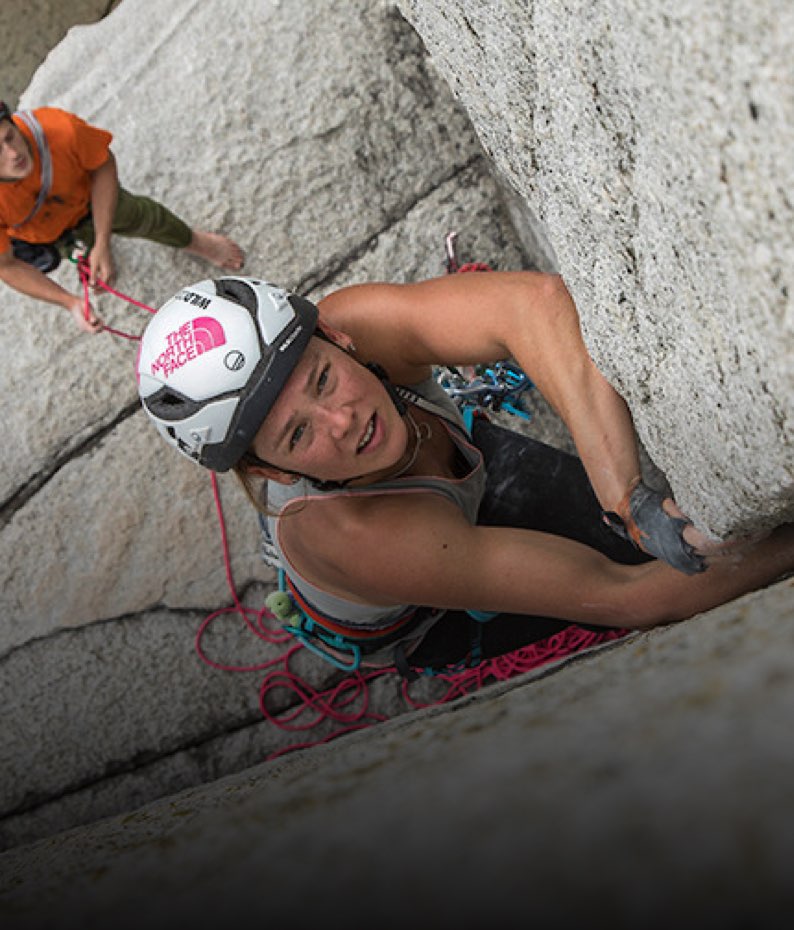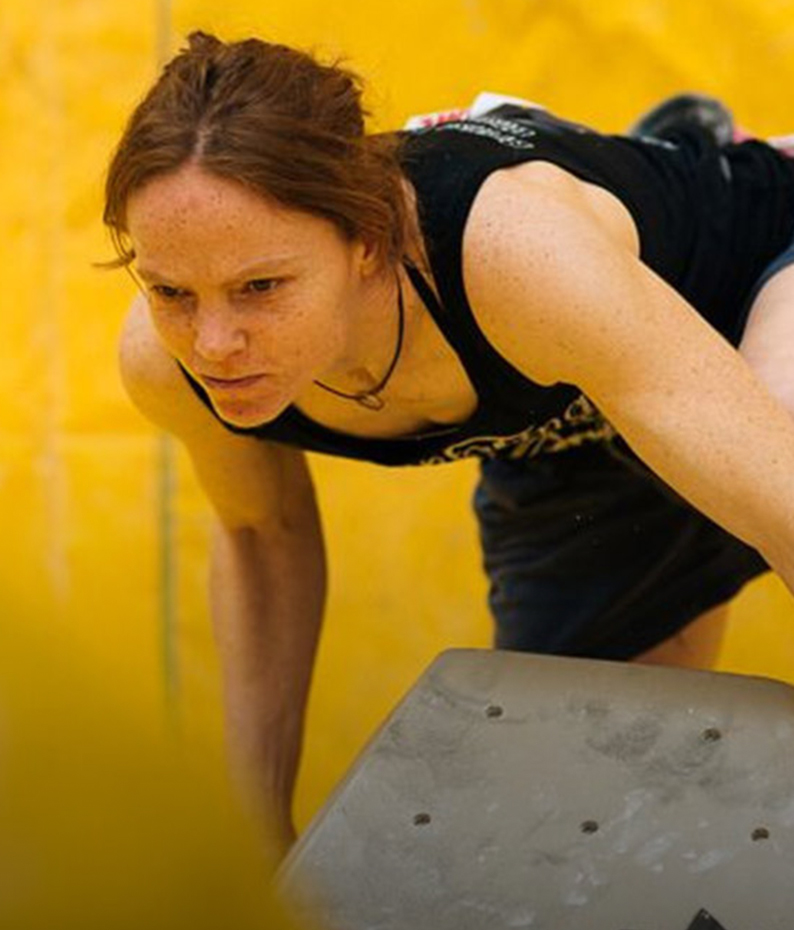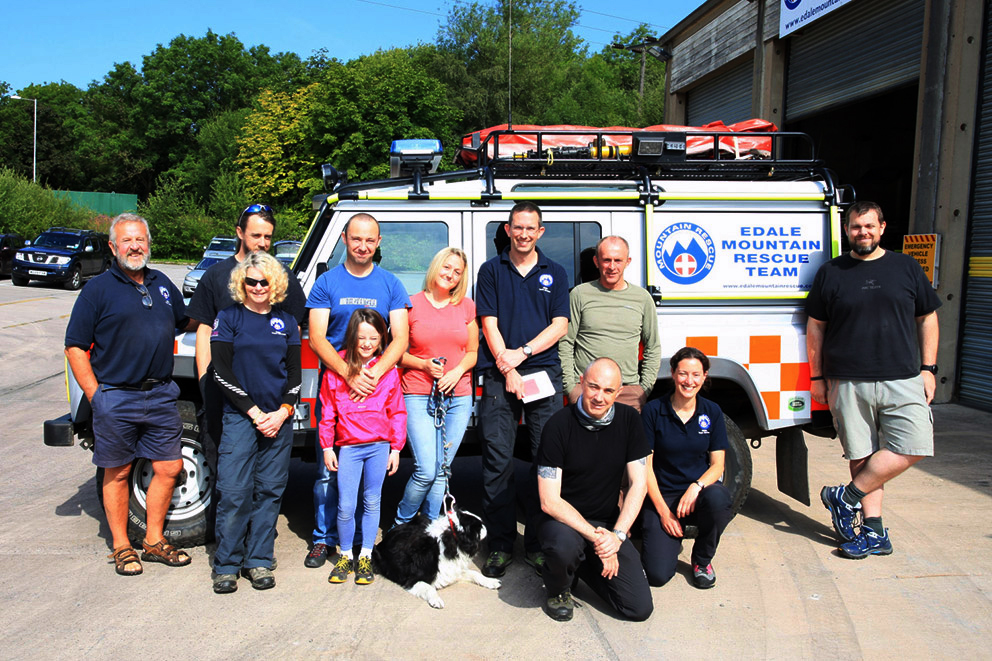Riflettori su Kinkasan
Caroline Ciavaldini e James Pearson proseguono nel loro impegno per rendere più visibile la piccola isola giapponese come nuova meta dell'alpinismo.
Caroline Ciavaldini e James Pearson proseguono nel loro impegno per rendere più visibile la piccola isola giapponese come nuova meta dell'alpinismo.
Anche con la miglior pianificazione, preparazione e intenzioni, qualcosa può sempre andare storto. L'idea era di godersi 10 giorni di nuovo routing su granito perfetto e intatto. Esplorare l'isola e il santuario, come anche aprire nuove vie sulla roccia immacolata, mentre le onde s'infrangono senza posa al di sotto. Volevamo mostrare Kinkasan in tutto il suo splendore al mondo, con la speranza che più alpinisti avrebbero visitato questo magico luogo, dando un impulso all'economia con il loro denaro e velocizzando il processo di ricostruzione. Il tifone dell'estate scorsa, però, aveva tutt'altre idee. Pioveva mentre uscivamo dall'aereo e andavamo in auto attraverso Tokyo alla palestra di Yuji, giustamente chiamata Campo Base. Pioveva mentre facevamo i bagagli e cenavamo. Abbiamo persino dovuto rimandare i nostri piani di 1 giorno, perché la tempesta stava rendendo l'oceano troppo agitato per navigarlo in traghetto.
Toru sfoggia la propria forza muscolare sul Kinkasan, nella “Light”, 5,12d o più, una via dono di Yuji. Ci sono doni che non si rifiutano. Foto: Eddie Gianelloni.
Era asciutto durante la traversata e, dopo aver disfatto le valigie al santuario, ci siamo dati al boulder su una spiaggia vicina per 1 ora, prima che ricominciasse a piovere. Con tanta roccia da vedere e poco tempo per farlo, abbiamo comunque camminato lungo la costa, per cercare potenziali vie. La pioggia si infittiva, noi ci inzuppavamo sempre più e, dopo 4 ore sotto l'acqua, siamo tornati al santuario, speranzosi ma abbattuti. Preparavamo questo viaggio dal settembre 2015, mettendo insieme la squadra, trovando fondi dagli sponsor, organizzando la logistica locale, ma tutto sarebbe stato invano, se il tempo non fosse migliorato.
Una mattinata di pioggia ci aveva dato la scusa di sederci a registrare alcune interviste, anche se, in realtà, c'era ben poco da dire, visto che avevamo scalato poco o nulla. Toru, l'eterno ottimista di poche parole, infine mi ha trascinato fino al più vicino punto per il boulder nella pausa tra due acquazzoni e, sorpresa!, siamo riusciti a fare una scalata. Toru si è dimostrato all'altezza della propria reputazione di coraggio e genialità, scalando le prime salite di due dei più arditi e duri problemi del Kinkasan. Finalmente la situazione cominciava a migliorare. Le previsioni per i giorni successivi erano buone e il morale del gruppo non avrebbe potuto essere più alto. Cominciavamo a pianificare la nostra esaltante avventura e la prima escursione all'altro lato dell'isola, un'area con la concentrazione più elevata di roccia e le falesie di maggiori dimensioni, ma abbiamo dovuto interromperle, dopo aver ricevuto brutte notizie.
Caro ha aperto la “Well dunne Dave” sul Kinkasan. Fessura facile, prima salita, nessun bisogno di schiodare: il sogno di ogni alpinista! Foto: Eddie Gianelloni.
Il santuario dell'isola di Kinkasan un tempo era visitato da centinaia di migliaia di persone all'anno, ma dopo lo tsunami, il numero si è ridotto al solo 5%. L'unica sistemazione sull'isola, una mostruosità di cemento degli anni '70, adesso era quasi sempre vuoto, tanto che, per le prime 2 notti, abbiamo avuto l'hotel tutto per noi. Tuttavia, in rare occasioni, il tempio celebra una speciale cerimonia, a cui si recano centinaia di fedeli da tutto il Giappone. L'indomani notte si sarebbe tenuta una di queste cerimonie, perciò, purtroppo per noi, non ci sarebbe più rimasto spazio all'hotel e sull'isola!
Con l'ultimo traghetto a lasciare l'isola alle 10, un inizio alle 5 era l'unico modo di infilare alcune ore di arrampicata, prima di essere costretti a tornare per la notte sul continente. Svegliarsi e cominciare a muoversi prima del sorgere del sole non è mai facile, ma nell'avvicinarci all'area per l'arrampicata, con il sole del mattino che riluceva tra gli alberi, tutto il sonno era ormai dimenticato. Avevo aperto un bel tiro corto su granito incontaminato scolpito e, sebbene non il tiro più difficile che abbia mai scalato, la qualità della roccia era fantastica. Succede di rado riuscire ad aprire nuove vie senza il bisogno di doverle preschiodare in lungo e in largo.
Il pasto di Bambi. Sull'isola vivono soltanto due monaci, ma vi si è stabilità tutta una colonia di cervi! Foto: Eddie Gianelloni.
Con la mia sete di scalate temporaneamente placata,
abbiamo lasciato l'isola in un limbo, felici ma tristi, sapendo comunque che vi saremmo tornati in meno di 24 ore. Abbiamo trascorso la giornata, visitando alcune delle città più colpite dallo tsunami, nell'impresa di comprendere meglio quali difficoltà ha dovuto superare la gente del posto e in che modo sta affrontando il futuro. Una cosa è ascoltare il telegiornale nel comfort del proprio salotto a casa, tutt'altra è vedere di prima mano, parlare con coloro che hanno perso tutto: casa, averi, persone care! Di colpo, tutti i nostri guai con la pioggia sembravano vergognosamente meschini e ci siamo ricordati perché ci trovavamo qui, tanto per cominciare. I nostri desideri personali di scalare devono essere subordinati all'obiettivo superiore di mostrare questo luogo al mondo intero. Che piova o splenda il sole, dobbiamo metterci in gioco. Esplorare i dintorni, documentare il potenziale e, se alla fine avremo un po' di fortuna, aprire nuove vie.

1 ISLAND, 2 MONKS AND UNTOUCHED GRANITE
“Why did James and I pick a small dot on the other side of the planet?”
Because Yuji told us about it. The last time Yuji proposed us a trip, we ended up in Kinabalu, the now oh so famous mountain where untouched granite will overwhelm the climber. The Real Rock tour has thrown Kinabalu into fame, but 5 years ago, when we went there, no climber could even put it on the climbing
Kinkasan is a small island not far from Fukushima, on the north east side of Japan. It has 26km circumference and is inhabited by two monks. From Tokyo it is a six hour journey. Yuji didn’t say that much more: Kinkasan’s coast is covered with granite cliffs, and there is a Shinto shrine on it. Yuji mentioned as well the damages made by the tsunami…
We began our journey with next to no expectations about the climbing, and a big question mark for the rest. 3 days in the trip and I know exactly why we came: for Japan.
2 years ago we spent a week in this unique country and both James and I knew that we had to come back one day: how could I compare it? Well, the first time you taste wine, you have heard a lot about it. But you smell, and you only smell the alcohol, you taste and you can’t put words on it because wine is subtle, complicated and requests an education. You have to go back to it, learn to enjoy, differentiate and remember. Japan is maybe a little bit like wine.
There is this astonishing mix of modernity (the Japanese toilets and their multi jets, music and self cleaning options give you an idea of the immensity of your difference) and spirituality, respect, focus.
We arrived at Base Camp, the gym that Yuji opened 5 years ago in Tokyo, and I oscillate between marvel and shame. I am a pro climber, and most of the boulders are too hard for me, the Japanese climbers around me seem to evolve so effortlessly, like flying cats on the wall. But then you realise: the world championship have just finished in Paris and in the bouldering competition, 3 of the 6 medals are not only Japanese, but from Tokyo, from Base Camp. Yuji and his company helps the athletes become professional and they often climb together. Shall I repeat that? Half of the world’s medals come from one gym! Surely there is no wonder that Yuji owns that gym… But that is only just the very top of the iceberg, because behind this 3 medals, there are a lot of other athletes with an incredible level. I have never seen so many good, extremely good boulderers in one place. And I am a former competition climber, trust me, I know what I am talking about.
“Why are they so good?”
The answer is surely complicated but here are a few elements: climbing has become very trendy in Japan, with over a 100 gyms in Tokyo. The Japanese body type is perfect for climbing; light, powerful and explosive muscles. The Japanese constant pursuit of perfection pushes the athletes to train hard, just like everyone around them simply accomplished every task with perfection.
It was dry for the crossing, and after unpacking our bags at the shrine we bouldered on a nearby beach for 1 hour before the rain came. With so much rock to see and so little time, we hiked out anyway along the coast to search out potential lines. The rain became heavier, we became wetter, and after 4 soggy hours we returned to the shrine, hopes high but spirits low. We’d been preparing this trip since September 2015, putting the team together, finding funding from sponsors, organizing the local logistics, yet it would all be in vain if the weather didn’t brighten up.
A morning of rain gave us the excuse to sit down and record some interviews, though truthfully we had little to say as we’d done little climbing. Toru, ever the silent optimist finally dragged me out to the closest boulder spot during a break between two showers, and we were surprisingly able to climb! Toru lived up to his reputation of boldness and brilliance, making the first ascents of two of Kinkasan’s boldest and hardest problems. Finally things were looking up. The forecast was good for the following days, and group psyche could not have been higher. We began to plan our upcoming adventure and our first trip to the other side of the island – the area with the highest concentration of rock, and the biggest cliffs, but had to cut them short as bad news broke.
With my thirst for climbing temporarily quenched, we left the island in limbo, happy, yet sad, but knowing we’d be back in less than 24 hours. We passed the day visiting some of the worst tsunami affected towns in an effort to better understand what hardships the local people had to live through, and how they are moving forwards towards the future. It is one thing to watch the news from the comfort of your lounge back home, it is another thing entirely to see it first hand, and speak to the people who have lost everything - houses, possessions, loved ones!
Suddenly our troubles with the rain seemed embarrassingly small, and we remembered why we were actually here in the first place.
Our personal climbing desires must come second to the larger goal of showing this place to the world. Rain or shine, we have to get out there. Hike around, document the potential, and if in the end we are lucky, open up some new routes.

